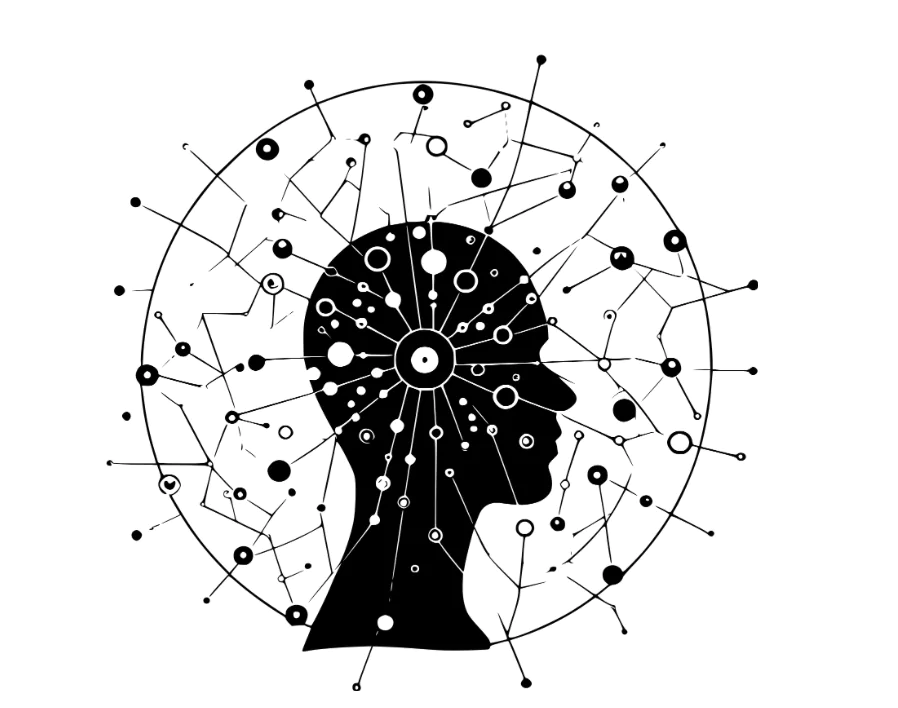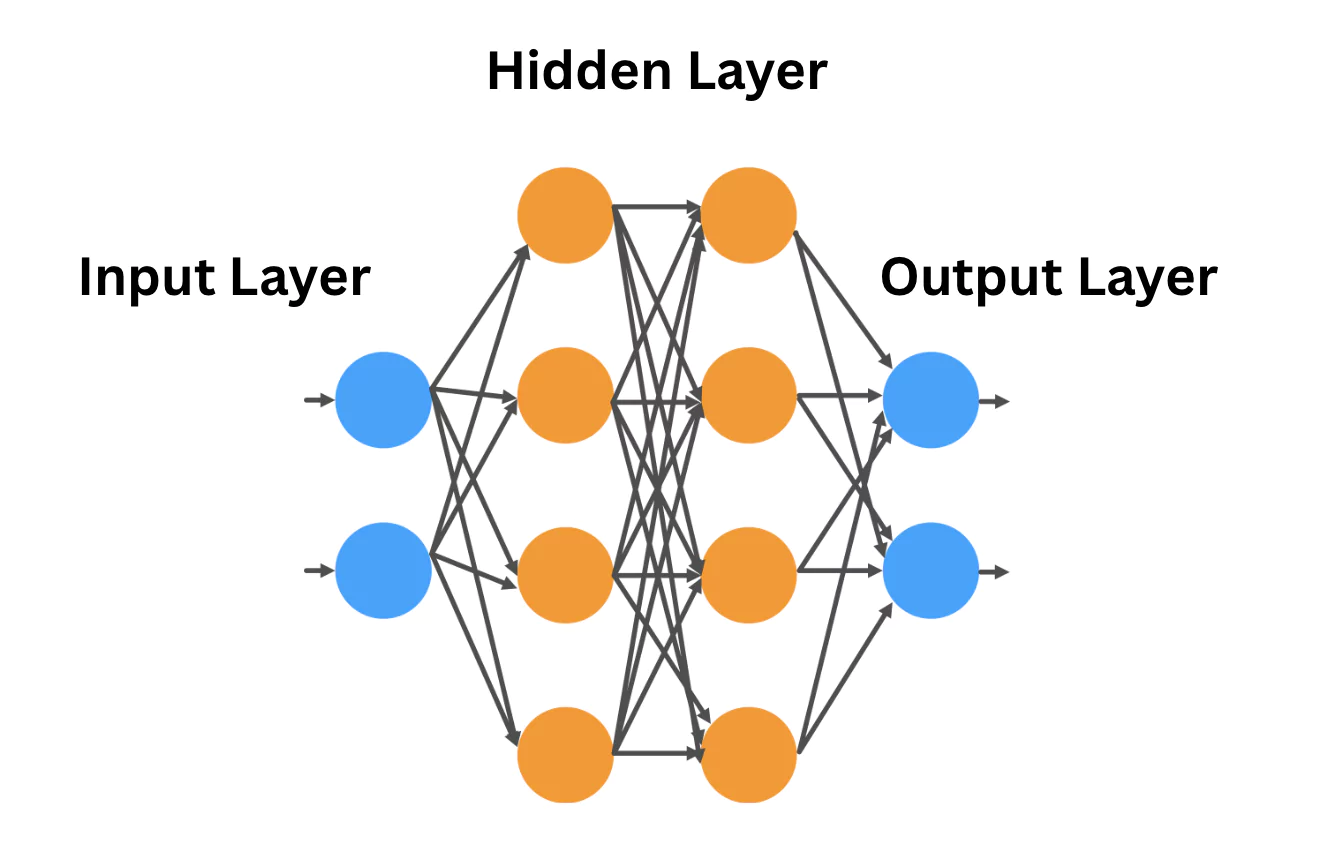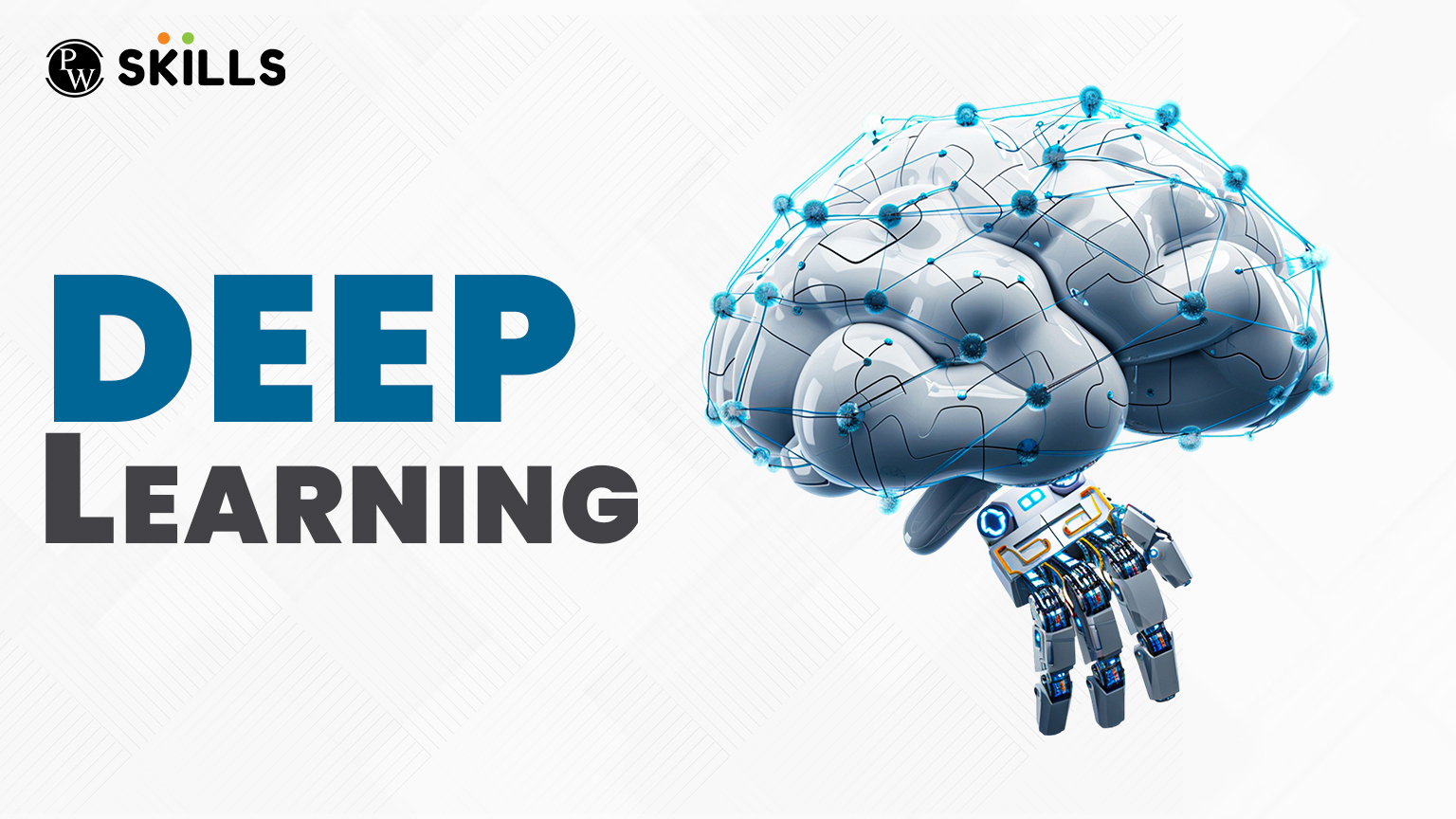Deep Learning is a part of machine learning that leverages artificial neural networks to learn from data. Artificial neural networks, or deep learning, are inspired by the human brain to solve complex problems.
With the help of Deep learning, computers or devices can easily find hidden patterns and make informed decisions for the vast amount of raw data. Here, we will learn everything in detail including, its uses, and career importance.
What Is Deep Learning?
Deep learning is a part of artificial intelligence (AI) and machine learning, which works on artificial neural networks inspired by the human brain, which also processes and learns from a large variety of data. It teaches computers to process data and perform functions very similar to what how humans solve a complex problem.
It is capable of recognising texts, images, sounds, and other complex patterns to produce valuable insights and predictions. Deep learning is incorporated to automate tasks requiring human intelligence.
The Evolution of Deep Learning Networks
The concept of artificial neurons was started by Frank Rosenblatt with the Perceptron in 1958. It was able to solve simple classification problems but was limited to linear tasks. In the 1980s, backpropagation algorithms came into the picture, which used multi-layer neural networks, making them more efficient and powerful.
However, due to the limited availability of computing power and small datasets, there was not much progress in this technology. While the early 2000s saw the rise of neural networks with a few hidden layers were used for advanced problems like handwritten recognition. A major turning point came with the availability of Big Data, GPUs, and better architectures. The ImageNet challenge in 2012, where the deep learning model outperformed all other available methods in image recognition.
Reinforced learning, generative models, and transfer learning expanded the scope of deep learning. Deep learning powers up many advanced methods like recommendation engines, chatbots, generative AI, self-driving cars, and medical AI.
Why Is Deep Learning Important?
Deep learning is important because it gives power to the machines to automatically learn complex patterns and make accurate predictions without being pre-programmed to do so. It is something very similar to “taking matters into its own hands.”

- These models are able to handle unstructured data which reduces manual labour dependency.
- Since the availability of the Graphical User Interface (GUI), deep learning models can process large amounts of data with lightning speed.
- Deep learning provides the most accurate and reliable results.
- Deep learning models can easily recognise complex patterns and trends to make important decisions.
![]() Join Our Data Science Telegram Channel
Join Our Data Science Telegram Channel
![]() Join Our Data Science WhatsApp Channel
Join Our Data Science WhatsApp Channel
It is an important hand behind taking the wave of modern AI ahead and finds application in many advanced technologies, including
- Chatbots
- Code generators
- Digital assistants
- Fraud detection
- Voice-activated remotes
- Automatic Facial Recognition
Use Cases of Deep Learning Models
Deep learning models are also used by businesses to analyse data and make predictions in many applications.
1. Automatic Feature Learning
It offers automated feature learning, whereas in traditional machine learning, we humans manually design features. Deep learning automatically builds and learns these features, which makes it more flexible and promising. This offers less human effort and higher accuracy.
2. Handle Complex Data
Deep learning can handle unstructured and raw data, including images, videos, and texts. It can easily process these types of data. For example, deep learning can recognise the faces in an image, understand verbally spoken language, summarise long documents, and more.
3. Computer Vision
Computer vision is a technique that can extract crucial information from multimedia, including images and videos. Deep learning can be used to interpret images in a similar way as we humans do. It can understand the details and description of the image.
With different content moderation filters, unsafe data can be removed i,e. Inappropriate image, unsafe content from video and image archives. The image classification can also be used to locate brands, safety sights, clothing, and more.
4. Speech Recognition
Deep learning models can analyse speech and extract information from different voice notes, patterns, pitches, accents, and tones. The speech recognition feature is very helpful for speech-to-text conversion or vice versa. The following can be used in call centres to help them classify different categories of calls. You can easily convert conversations into documentation in real time. The scripts can be converted into prompts for better voice assistance.
5. Natural Language Processing
Computers use deep learning algorithms to gather valuable insights from text data and documents. The following data collected from deep learning can be used to build automated chatbots and agents. We can also perform automated summarization of long form documents, index sentiment-based data on social media, and plenty more.
Read More: Top 30 Deep Learning Interview Questions for Data Scientists 2025
6. Generative AI
These smart neural models can be used to provide support or assist in automating complex workflows, brainstorming ideas, and advanced keyword research. You can ask your question in the form of prompts and get summarised answers from multiple sources. You can also create new documents, emails, and other content faster. Get better suggestions and automate the code upgrades and scanning.
How Does Deep Learning Work?
Deep learning is based on numerous interconnected neural networks, which can process the available input data. Data passes through multiple layers. Data is passed into the neural network through a designated input layer and then processed step by step, gradually through multiple hidden layers, where each layer learns increasingly complex features.
For example, in image recognition, early layers are able to detect only simple edges, while the middle layers combine those into shapes, and then the deeper layers recognize full objects. Finally, the output layer presents the prediction or classification, such as an image being a cat or dog, after complete analysis.
The network is able to learn through a process known as training, where it adjusts the weights i,e. connections between neurones, by comparing predictions to actual results and minimising all present errors using algorithms like backpropagation and gradient descent.
Over time, with lots of available data and computation power, the deep learning model becomes highly accurate at tasks like speech recognition, language translation, or detecting diseases in medical scans. It can get better results for any specific tasks you train it for.

The input layer in this model contains raw data, which is transferred to the hidden layer nodes in the next phase. The hidden layer nodes then classify the data points based on the insights available. An accurate assumption is prepared with the scope of the target value, which is then presented using the output layer by selecting the most appropriate label.
Deep Learning Examples: Cat & Dog
The deep learning models recognise the image by classifying based on various patterns in the image layer by layer. When you provide an image to a network, the first layer detects the low level features of the image, like the edges, colors, and other simple textures.

When the image passes deeper into the network, the layer then moves to the next higher level features such as eyes, ears, snouts, fur patterns, etc. Now the last layer combines all these features to make a decision based on the probability percentage.
These models makes it possible by training with labeled data of thousands of cats and dogs with their correct labels. The CNN makes predictions and compares it with the actual label and then adjusts the internal weights to reduce errors.
Also Read:
- K Nearest Neighbor Algorithm (KNN) Explained – Effective 2025 Guide
- Hierarchical Clustering in Machine Learning: 2 Types, Examples, and Python Useful Guide
- What is Gradient Descent? A Beginner’s Guide to the Learning Algorithm
- Confidence Intervals Made Easy: Examples, Formulas & Real-life Use
Learn Data Science with PW Skills
Gain proficiency in Data Science with generative AI in this all-in-one 6-month online program provided by PW Skills. In this Data Science Course, you will get in-depth tutorials covering every fundamental, tool, and technology important to make you job-ready.
Learn in the presence of dedicated mentors, get industry-led live sessions, and record lecture videos. Practice exercises, module level assignments, and capstone projects are the main highlights of this course. Hurry! enroll now and get your data science certification only at pwskills.com

